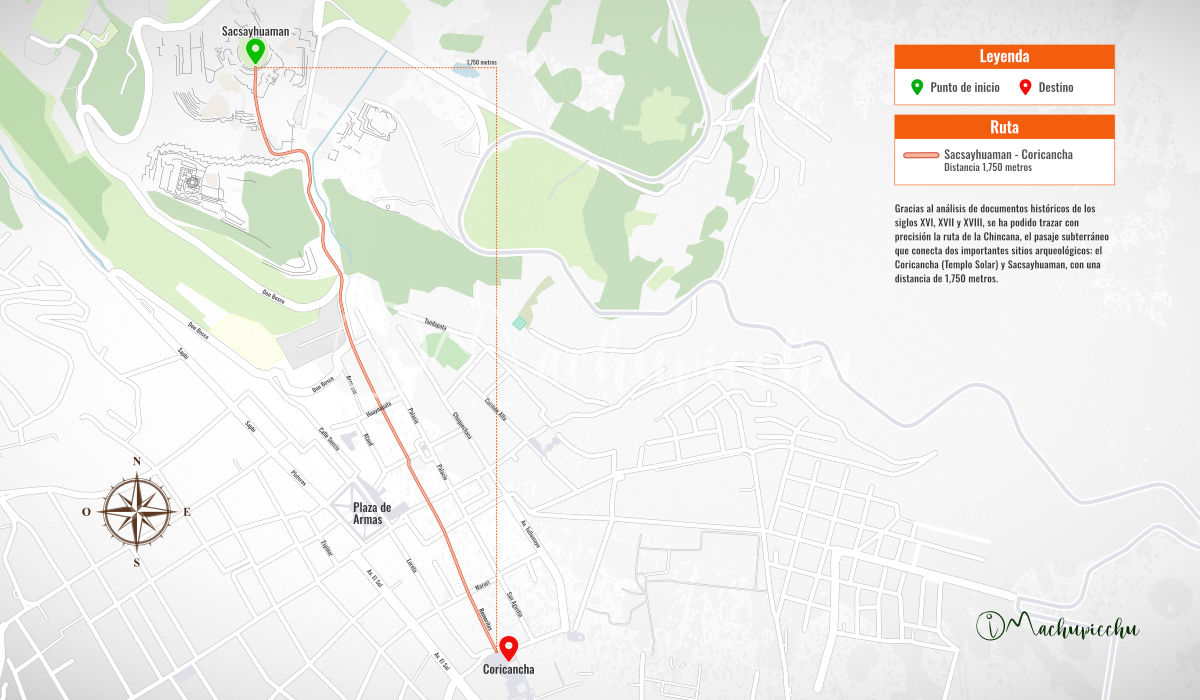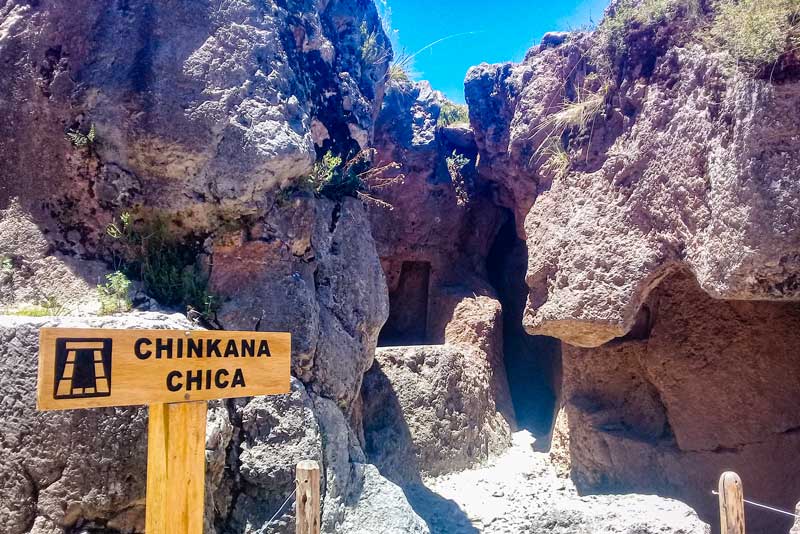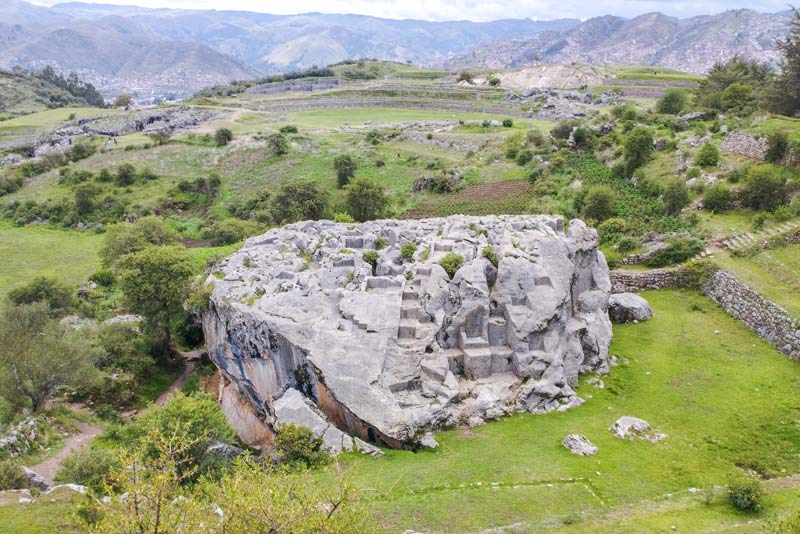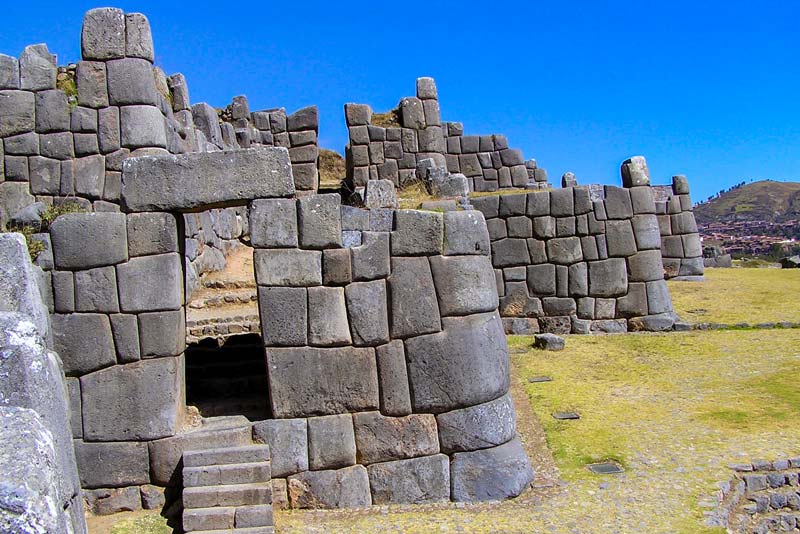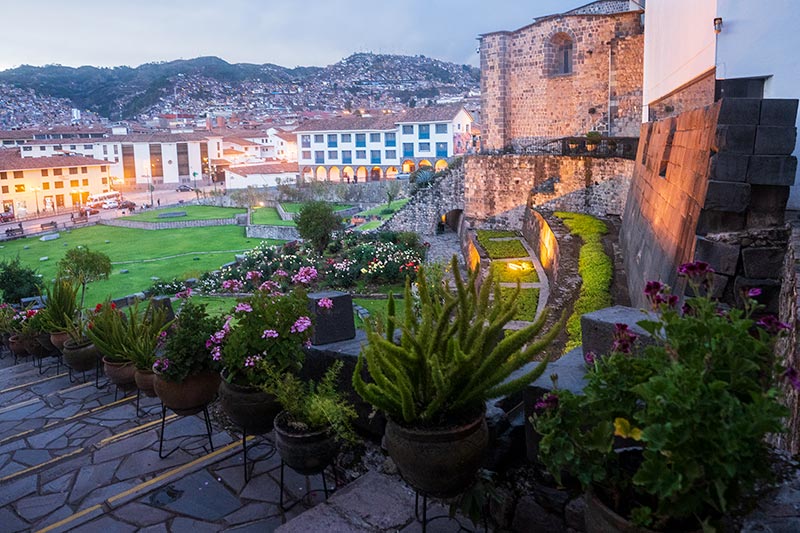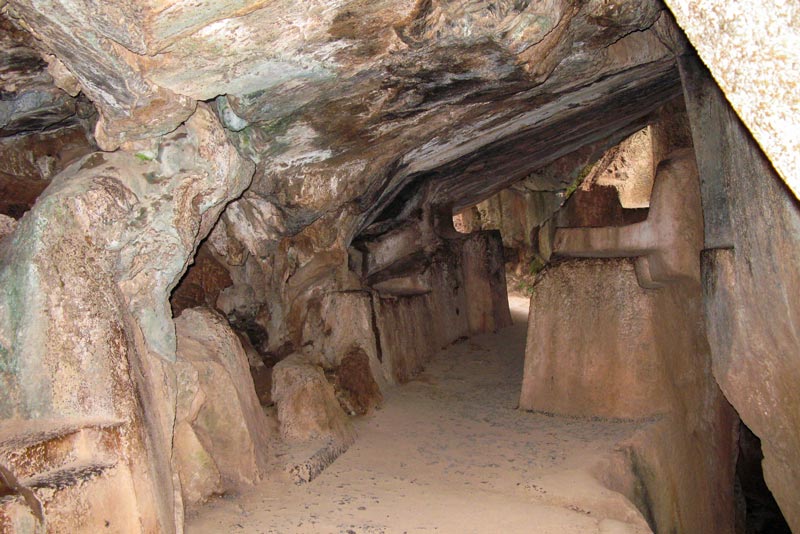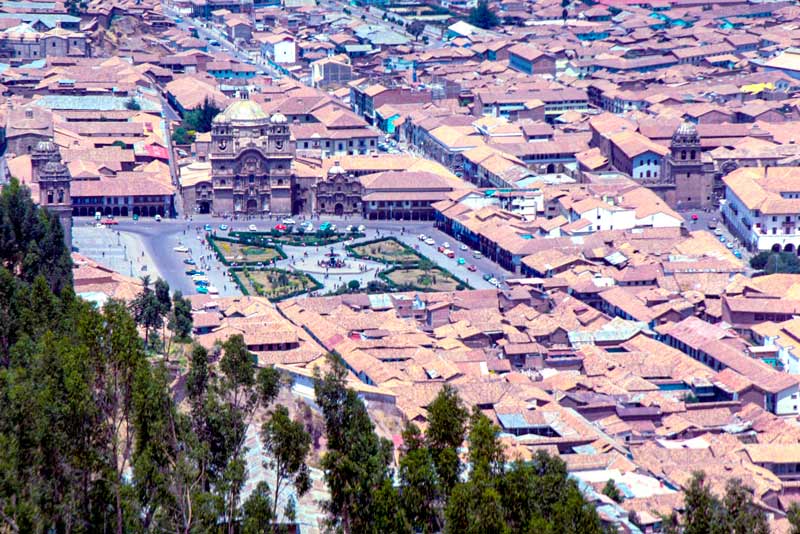The mysterious Chincanas or subway tunnels in Cusco
Due to its history, Cusco is a place full of enigmas and legends. Among these mysteries are the Chincanas, a network of underground tunnels that, according to various accounts, connect important temples and archaeological sites in the city. These structures have been the subject of research, popular stories, and expeditions over the centuries, but a definitive study revealing all their secrets has yet to be achieved. The Chincanas have sparked the curiosity of archaeologists, historians, and adventurers who seek to decipher their function and origin.
- What are the Chincanas?
- How many Chincanas are there?
- What was the function of the Chincanas?
- Places to visit to learn about the Chincanas
- Characteristics of Cusco
- Recommendations
- Frequently Asked Questions
What are the Chincanas?
The word Chincana comes from Quechua and means “labyrinth” or “hidden passage.” These are underground tunnels, some of great length and others smaller, built in pre-Hispanic times. Although the technology used for their excavation remains uncertain, they were designed with impressive precision, characteristic of Inca architecture.
Cusco is a destination that awakens imagination and awe, especially when exploring its hidden underground mysteries. The Chincanas, those subterranean labyrinths filled with secrets and legends, transport you to a world where history and mystery intertwine. Discovering Cusco and its Chincanas means diving into an enigma that has endured for centuries—an experience that ignites the explorer’s spirit and leaves you with the feeling of having touched a fragment of the sacred. A journey that defies reason and nourishes the soul!
How many Chincanas are there?
Recent research has identified more tunnels than previously known. While the complete mapping of the network is still ongoing, findings highlight the following:
- Sacsayhuamán: At least two main tunnels have been confirmed:
- The Chincana Grande: A vast and complex corridor that, according to new evidence, may connect the Sacsayhuamán fortress with other strategic points.
- The Chincana Chica: Smaller in size but equally significant. It has become a popular attraction due to its accessibility.
- Coricancha: Scans have revealed the existence of passages connecting the Temple of the Sun with other ceremonial centers, reaffirming its central role in the Inca urban layout.
- Historic Center of Cusco: In the area surrounding Plaza de Armas, the Cathedral, and nearby buildings, underground accesses have been detected, linking colonial architecture with Inca remnants.
- Other archaeological sites: Places like Qenqo show evidence of underground galleries that are part of this network, extending its total length to over 8 kilometers of confirmed tunnels, with at least 12 interconnected passages likely existing.
What was the function of the Chincanas?
The confirmation of their existence has allowed experts to delve into their possible functions, which include:
Ritual and Ceremonial Connection
The tunnels linked temples and sacred centers (such as Coricancha and Sacsayhuamán), facilitating passage between different sacred spaces. Their strategic locations suggest they were part of a ceremonial network integrating Inca cosmology.
Communication and Security Routes
During times of conflict or invasion, the Chincanas may have served as secret routes for the safe movement of people and messages. The presence of multiple strategically placed exits and entrances suggests planning focused on protecting the city.
Channeling of Resources and Sacred Objects
Some studies suggest these passages might have been used for discreetly transporting valuable objects, offerings, and even hidden treasures, protecting them from possible looting.
Urban Integration Elements
Beyond their practical function, the Chincanas reflect a sophisticated urban design that merged the sacred with daily life, connecting different areas of the city.
Places to visit to learn about the Chincanas
Exploring the mystery of the Chincanas also leads to discovering nearby sites, enriching your experience during the visit.
Archaeological complex of Sacsayhuamán
Visiting the Chincanas
- Chincana Grande and Chincana Chica: Venture into the mysterious tunnels that connect this iconic site with other ceremonial centers.
- Tour of Sacsayhuamán: Enjoy the impressive walls, terraces, and panoramic views of the city. We recommend arriving early to avoid crowds and better appreciate the grandeur of Inca engineering.
Additional Activities
- Take a guided tour to learn about both the function of the Chincanas and the history of the site.
- Explore the natural trails surrounding the area, where the fusion of historical heritage and breathtaking landscapes creates an unforgettable experience.
Coricancha and the Convent of Santo Domingo
Coricancha (Temple of the Sun)
- Discover the underground passages connecting Coricancha with other important sites and learn about their construction details and ceremonial significance.
- Observe the contrast between Inca architecture and the later colonial construction, as the Convent of Santo Domingo was built upon the original temple foundations.
San Blas Neighborhood
- After visiting Coricancha, stroll through the charming San Blas neighborhood in Cusco, famous for its artisan workshops, art galleries, and cobbled streets full of character.
- Enjoy a coffee or lunch in one of its cozy establishments—perfect for relaxing and soaking in the bohemian atmosphere of the area.
Archaeological site of Qenqo
Exploring Qenqo
- Step into this enigmatic ceremonial center, with its stone-carved structures and ritual caves that add to the narrative of the Chincanas.
- Learn about the ancestral ceremonies performed at this site and how it was integrated into the underground network.
Complementary Tour Options
- Combine your visit to Qenqo with an excursion into its surrounding forest, an ideal spot for relaxation, picnics, and enjoying nature with family or friends.
Historic center of Cusco and Plaza de Armas
Guided Tour of the Historic Center
- Discover how colonial and Inca remains intertwine as you explore Plaza de Armas and the Cusco Cathedral, where recent research has unveiled underground access points.
- Immerse yourself in history through tours highlighting Cusco’s urban transformation over the centuries.
Gastronomic and Cultural Experience
- Stop by local markets and traditional restaurants to taste authentic dishes.
- Visit local museums, such as the Inca Museum or the Museum of Pre-Columbian Art, to learn more about the ancient culture and history that gave rise to these underground wonders.
Characteristics of Cusco
| Characteristic | Description |
|---|---|
| Location | In southern Peru, in the Andes mountain range. |
| Altitude | 3,400 meters above sea level. |
| Geography | Mountainous region with valleys and rivers, surrounded by the Andes. |
| Climate | Usually mild and dry, with two seasons: rainy season (November – March) and dry season (April – October). |
| Average temperature | Between 5°C and 20°C, with cold nights. |
| Language | Spanish, Quechua, and in some areas Aymara. |
| Tourist attractions | Machu Picchu, Sacsayhuamán, Sacred Valley, Coricancha, Plaza de Armas, Rainbow Mountain. |
| Population | Around 500,000 inhabitants (Cusco city). |
Recommendations
- Plan your itinerary in advance by researching the schedules of each site and booking the tour that best suits what you want.
- Visit Sacsayhuamán to explore Chincana Chica while enjoying the surrounding areas with impressive panoramic views.
- Tour Coricancha and the Santo Domingo Convent to discover the fusion between Inca architecture and colonial construction.
- Walk through the San Blas neighborhood and enjoy its cobbled streets, artisan workshops, and bohemian atmosphere.
- Take advantage of viewpoints and natural routes to get unique perspectives of Cusco and its Andean landscapes.
- Learn about safety measures and follow the instructions of specialized guides on each tour.
- Participate in cultural activities and enjoy the gastronomy by tasting typical dishes.
- Respect the heritage and the environment by maintaining responsible behavior that contributes to the conservation of these historic sites.
Frequently Asked Questions
1) What are the Chincanas?
They are a network of underground tunnels of pre-Hispanic origin, built by the Incas, that connect ceremonial, administrative, and strategic centers of the ancient city of Cusco.
2) How many Chincanas have been identified in Cusco?
Recent research has revealed more than 12 interconnected passages at different points in the city, located in sites such as Sacsayhuamán, Coricancha, the Historic Center, and others, although the complete mapping is still ongoing.
3) What was the purpose of the Chincanas?
It is believed that they had multiple functions: they facilitated the safe transport of people and objects, served as ritual and ceremonial routes to connect sacred temples, and contributed to the urban integration of the city.
4) Can the Chincanas be visited?
Yes, some Chincanas, such as Chincana Chica in Sacsayhuamán, are open to the public through guided tours. However, other passages are not accessible for security and heritage conservation reasons.
5) What is the best time to visit Cusco and the Chincanas?
The dry season, from May to September, is ideal for visiting Cusco, as the weather is more stable, making it easier to tour archaeological sites and explore the Chincanas.
6) Is it necessary to hire a guide to visit the Chincanas?
It is recommended to have a specialized guide, as they provide detailed information about the history, architecture, and functions of the Chincanas, in addition to ensuring your safety during the visit.
7) What other attractions can be visited along with the Chincanas?
In addition to exploring the Chincanas, you can visit emblematic sites such as Sacsayhuamán, Coricancha, Qenqo, Cusco’s Historic Center, and the San Blas neighborhood, allowing for a comprehensive experience of the region’s rich history and culture.
8) What is the historical significance of the Chincanas in Cusco?
These structures demonstrate the ingenuity and planning of the Inca civilization, showing how various sacred and administrative spaces were interconnected.
Advice from people who have been there
 By: Anya L.
By: Anya L.“Mysterious tunnels“
“Entering the small Chincana led me to wonder about all the mysteries that the big one must hold, I was really fascinated by the Inca infrastructure and I am full of questions about everything we still don't know.“
By Ticket Machu Picchu – Last updated, February 21, 2025
